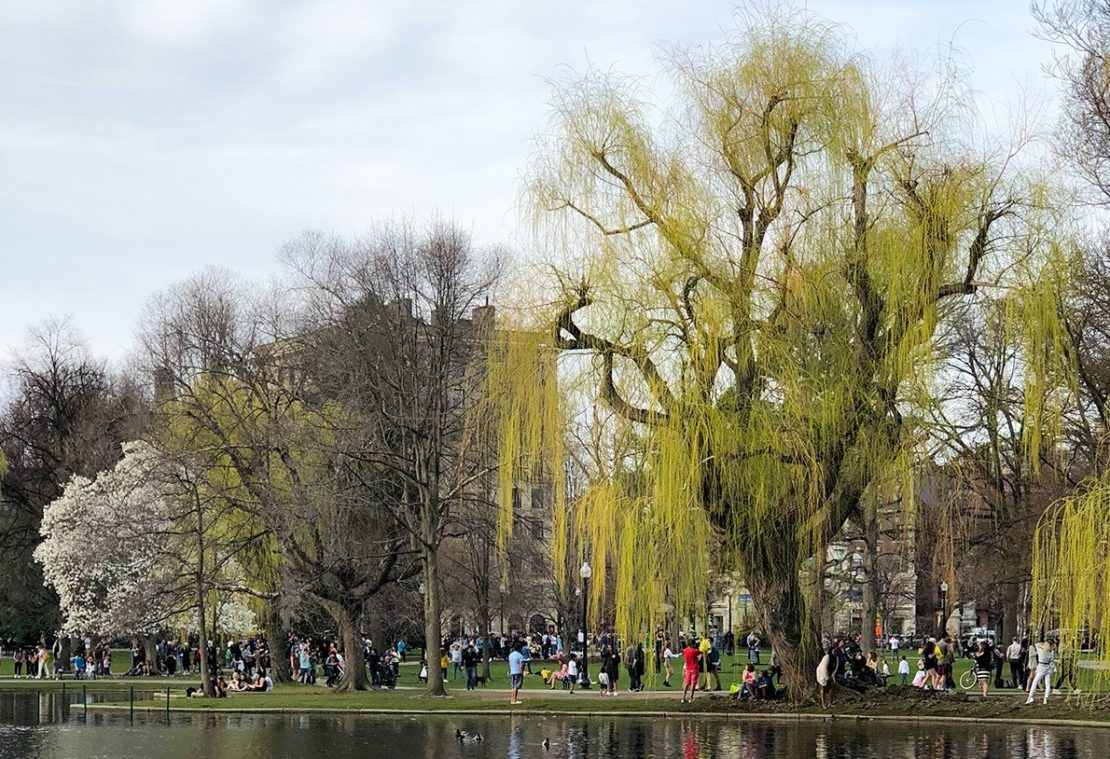
Urban Herbalism: Herbal Recipes For Life In An Urban Environment
Some of the most courageous herbalists are the ones who choose to live in cities and share their skills with the community-at-large.
Urban herbalism is not always easy. The act of harvesting plants is less accessible and growing herbs is more challenging due to limited space. Not to mention, living in an urban environment presents a whole number of wellness challenges to navigate.
Although people often assume that city-living and herbalism do not go hand-in-hand, herbs can help balance some of the most common wellness-related struggles that urban environments introduce. In this article, I have gathered some of my go-to herbal recipes specific to life in an urban environment. Read on to learn all about these recipes and how to start supporting a sustainable city life with herbs.
Herbal Recipes for Urban Herbalism
Nerve Nourishing Herbal Tea
With all of the constant stimulus that urban environments constantly throw at you, it’s no wonder many city dwellers suffer from nervous system-related issues and imbalances. An essential part of my urban herbalism protocol is introducing herbs for daily nerve support.
The onslaught of traffic, bright fluorescent lights at all hours, and navigating through a sea of people to get to work every day can start to make your nervous system feel a bit “frayed” over time. Integrating a daily herbal tea, like my Nerve Nourishing Tea recipe below, can help nourish and restore a frayed nervous system while soothing the effects of constant nervous system stimulus.

This herbal tea recipe combines skullcap (Scutellaria lateriflora), a superior relaxing nervine, oatstraw (Avena sativa), a nervous system trophorestorative, and violet (Viola odorata), an overall nerve restorative, to simultaneously soothe agitation and strengthen the overall function of the nervous system again (Holmes, 1989a; Holmes, 1989b). Tulsi (Ocimum tenuiflorum) is another one of my go-to herbs for nerve support since it functions as a mild adaptogen, helping guide the body to a state of stress resiliency instead of reactivity (Cohen, 2014). It’s mixed stimulant and relaxant properties help make this tea a more balanced blend for enjoying anytime throughout the day. Marshmallow (Althea officinalis) root lends its moistening and mucilaginous nature to balance the more dry components of the other herbs while providing a secondary action of soothing the gut (Holmes, 1989a), and since the gut has its own nervous system (the enteric nervous system), its equally as important to support healthy gut function while focusing on our nervous system overall.
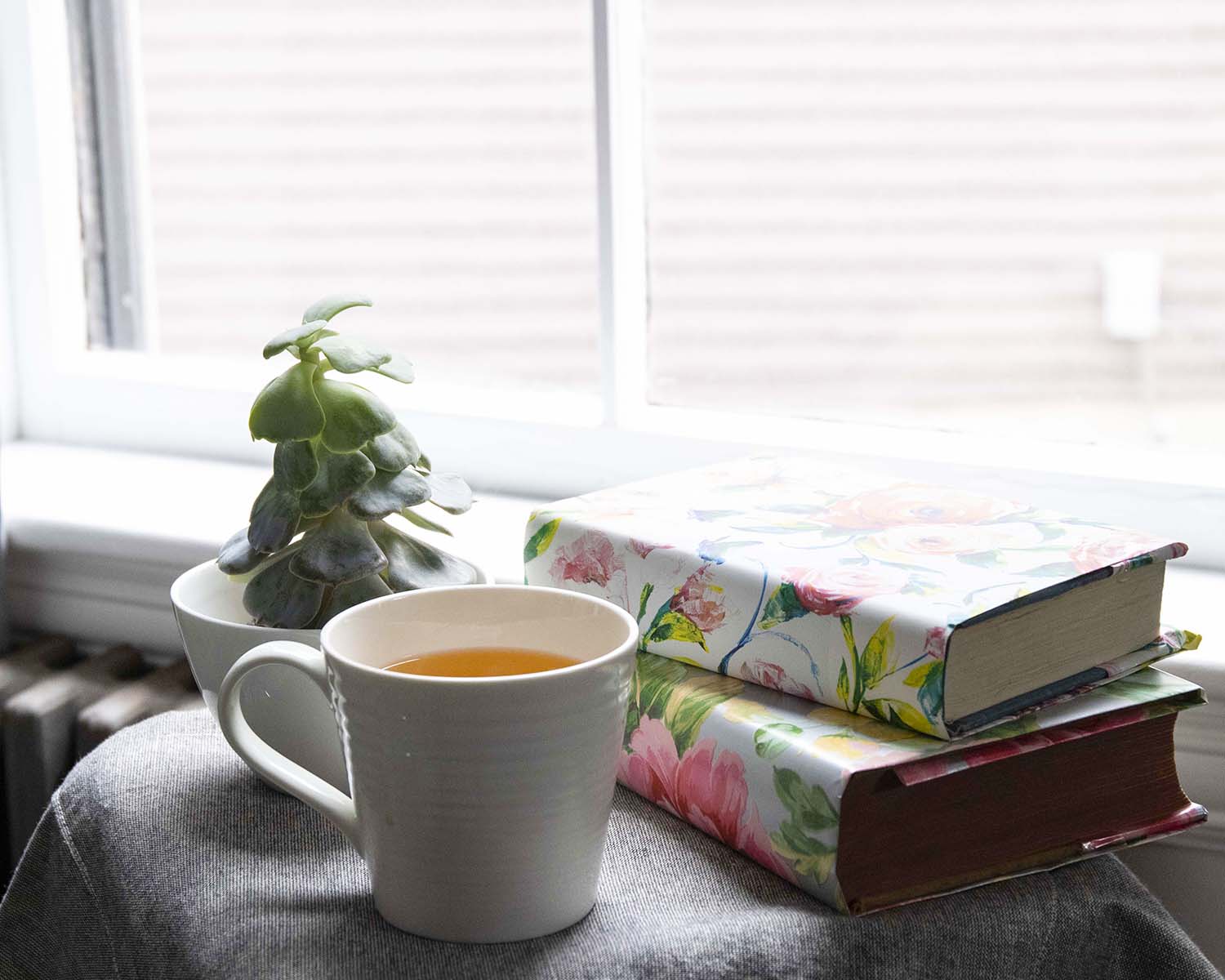
Nerve Nourishing Herbal Tea
0.3 part dried skullcap (Scutellaria lateriflora) leaf
0.5 part dried tulsi (Ocimum tenuiflorum) leaf
1 part dried oat (Avena sativa) straw
0.5 part dried violet (Viola odorata) leaf
0.5 part dried marshmallow (Althea officinalis) root
1 cup boiling water
- Add all herbs to a jar and mix well to combine. Cover the jar with a lid and store in a cool, dark place until ready to use.
- When ready to prepare the tea, add 1 heaping tablespoon of dried herbs from the jar into a heat-safe mug or container.
- Pour the boiling water on top of the herbs and stir to combine.
- Allow the tea to steep for 15 minutes or longer.
- Strain the herbs from the tea and discard.
- Add raw honey to taste if additional sweetness is desired. Take a deep breath, sip, and enjoy!
Love Your Liver Herbal Tincture
When living in an environment where air quality, pollutants, and water quality are more of a daily challenge, it’s vital to ensure that your liver is functioning in tip-top shape. Our liver carries over 500 functions in the body and is considered our “master filter,” responsible for processing and filtering our blood in addition to helping detoxify chemicals from the body (Bhatia, Underhill, Zaret, & Foxe, 2014). Living in an urban environment (and in certain rural areas as well) can become more taxing on the liver through having frequent exposure to chemicals in the air and water in addition to other pollutants the liver is responsible to help detoxify.
Adding a simple, daily liver-supportive herbal tincture formula is an easy way to help promote healthy liver function amidst all of the additional challenges it faces in an urban environment. Below is a recipe for my Love Your Liver herbal tincture, a staple formula in my urban herbalism toolbox. This blend draws from a variety of classic liver-supportive herbs to help decongest the liver so our “master filter” can function in optimum shape. All four herbs in this formula (burdock (Arctium lappa) root, dandelion (Taraxacum officinale) root, milk thistle (Silybum marianum) seed, and reishi (Ganoderma lucidum) mushroom) work to protect and restore the liver while helping promote healthy and natural liver detoxification (Holmes, 1989a; Holmes, 1989b).
Love Your Liver Herbal Tincture Formula
10 ml dandelion (Taraxacum officinale) root tincture
20 ml burdock (Arctium lappa) root tincture
20 ml milk thistle (Silybum marianum) seed tincture
10 ml reishi (Ganoderma lucidum) mushroom tincture
- Combine all of the tinctures into a 2-ounce glass dropper bottle. Shake the dropper bottle lightly to combine.
- Enjoy 30 drops 2x/day.
Read our post on how to make an herbal tincture from scratch here.
Deep Breath Syrup
Although cities are full of exciting opportunities, culture, and entertainment, their industrial nature creates a polluted environment with compromised air quality. While the exact air quality varies depending on the city you live in, it’s important to take extra measures to keep your lung health in good shape and prevent deeper pollution-related issues from taking root. Boosting the air quality in your home and workspace (if possible) using an essential oil diffuser, particulate air filter, and occasional herbal incense burning are all important tools to draw from.
One of my go-to urban herbalism recipes is to make the Deep Breath Syrup recipe below. This formula can be used for acute lung support or as a daily preventative and immune-booster. Plantain (Plantago major) leaf lends soothing support for the mucous membranes of the bronchial system while helping quell inflamed tissues triggered by pollutants in the air. Osha (Ligusticum porteri) root also carries an affinity for the lungs and throat, helping promote a healthy bacterial state in the respiratory system while serving as an expectorant for stagnant mucus (Holmes, 1989a). Remember to always ensure that your osha root was ethically wildcrafted when sourcing. Echinacea (Echinacea spp.) root and thyme (Thymus vulgaris) aerial parts complement the formula through providing deep and more broad spectrum immune system support and viral support respectively (Holmes, 1989a; Holmes, 1989b).
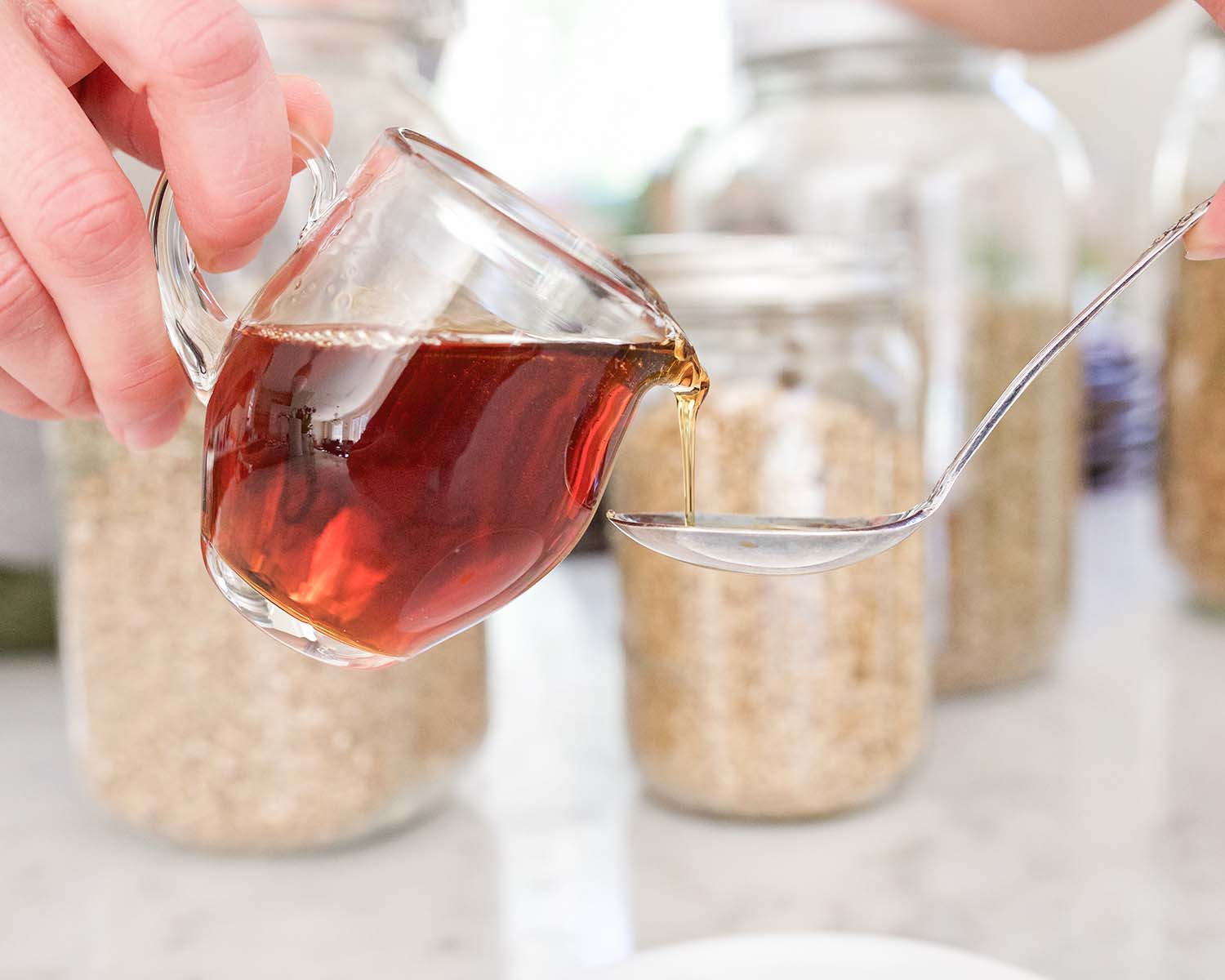
Deep Breath Herbal Syrup Recipe
0.5 part plantain (Plantago major) leaf
1 part osha (Ligusticum porteri) root
1 part echinacea (Echinacea spp.) root
0.25 part thyme (Thymus vulgaris) leaf
1 quart of cool water
1 to 2 cups of honey or sugar
- Start by combining the hard roots (osha and echinacea) together in equal parts in a measuring cup until the mixture equals about 1/2 cup total. Add this mixture to a pot with the cool water.
- Combine the plantain and thyme together in a measuring cup until the mixture equals about 1/4 cup total. Set this mixture aside until later in the recipe.
- Bring the pot with the root mixture and water to a simmer then cover the pot partially with a lid.
- Allow the mixture to simmer until the liquid is reduced by half.
- Remove the pot from the heat then add the plantain and thyme mixture to the pot.
- Cover the pot fully with the lid and allow the leaves to steep for 1-2 hours.
- Strain out all of the herbs then return the liquid to the pot.
- Add the honey or sugar to the liquid in the pot.
- If using honey: heat the mixture very gently without boiling the syrup until the honey is just dissolved. This helps the naturally occurring enzymes in the honey to be preserved!
- If using sugar: either heat the syrup just enough to dissolve the sugar (if you prefer a thinner syrup) or bring the syrup to a gentle boil and simmer for an extra 30 minutes (if you prefer a thicker syrup).
- Take the syrup off the heat and pour it into clean, sterile glass bottles. You can store the syrup in the refrigerator for up to 3 months. Enjoy 1/2 teaspoon, 1x/day for preventative lung support, or 1 teaspoon, 2x/day for acute lung support.
Learn more about making your own herbal syrup through our Basic Herbal Syrup Recipe here.
Healthy Boundary Setting
While healthy boundary setting is a great practice anywhere, it is especially important to utilize while living or visiting an urban environment. Since cities are more densely populated with people, absorbing other energies around you or internalizing situations you witness are constant challenges that one must be prepared to face on a daily basis. This is why healthy boundary setting with herbs is an important aspect of urban herbalism.
Since boundaries are often perceived and felt energetically and emotionally within a person, flower essences are a handy herbal tool to draw from here. Below is my favorite flower essence recipe for cultivating healthy boundaries over time and offering acute boundary protection when needed.
Hawthorn (Crataegus monogyna) is a well-known herb for helping protect, nourish, and tonify the energies of the heart and the physical cardiovascular system (Holmes, 1989a). Taken as a flower essence in formula with pink yarrow (Achillea millefolium var. rubra), a classic essence for cultivating appropriate emotional boundaries, and centaury (Centaurium erythraea), a supportive aid for empowering one’s ability to say “no” and honoring personal needs, this blend addresses multiple angles of healthy boundary setting at once (FES Flowers, n.d.). Carry this formula with you as you trek around the city to use as needed in your urban herbalism toolbox.
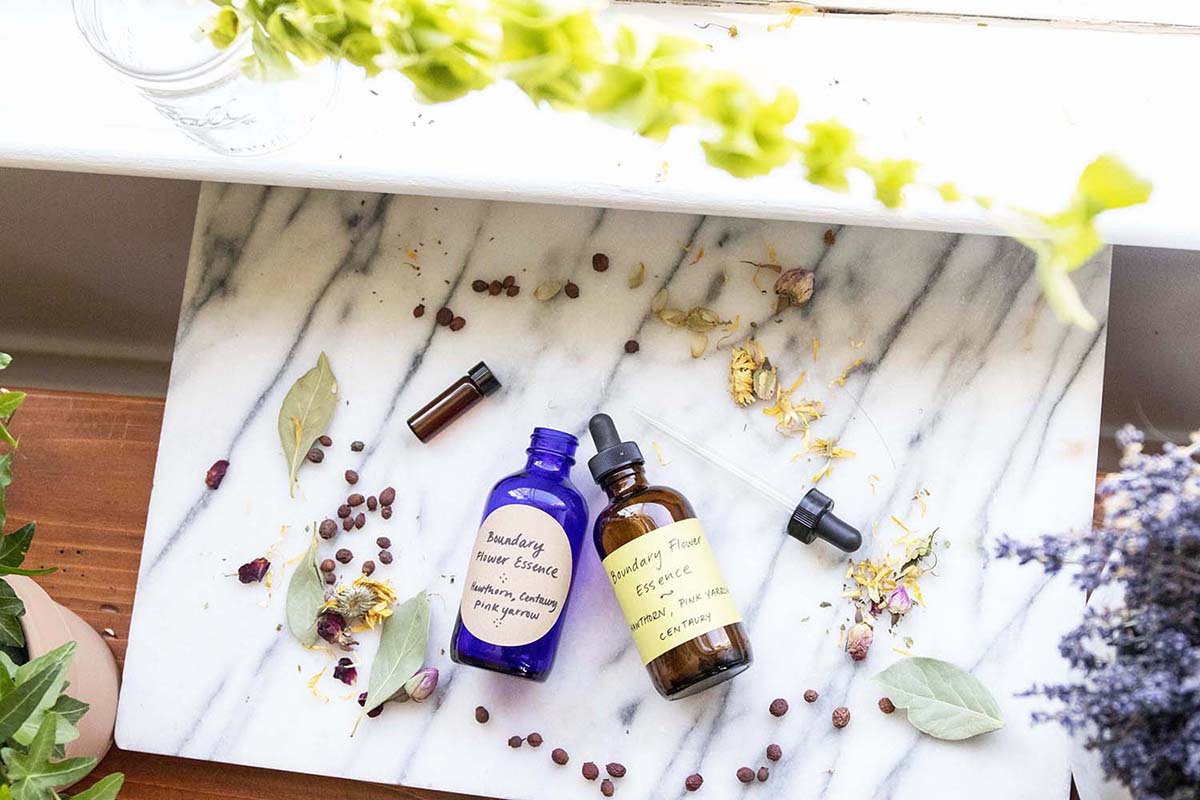
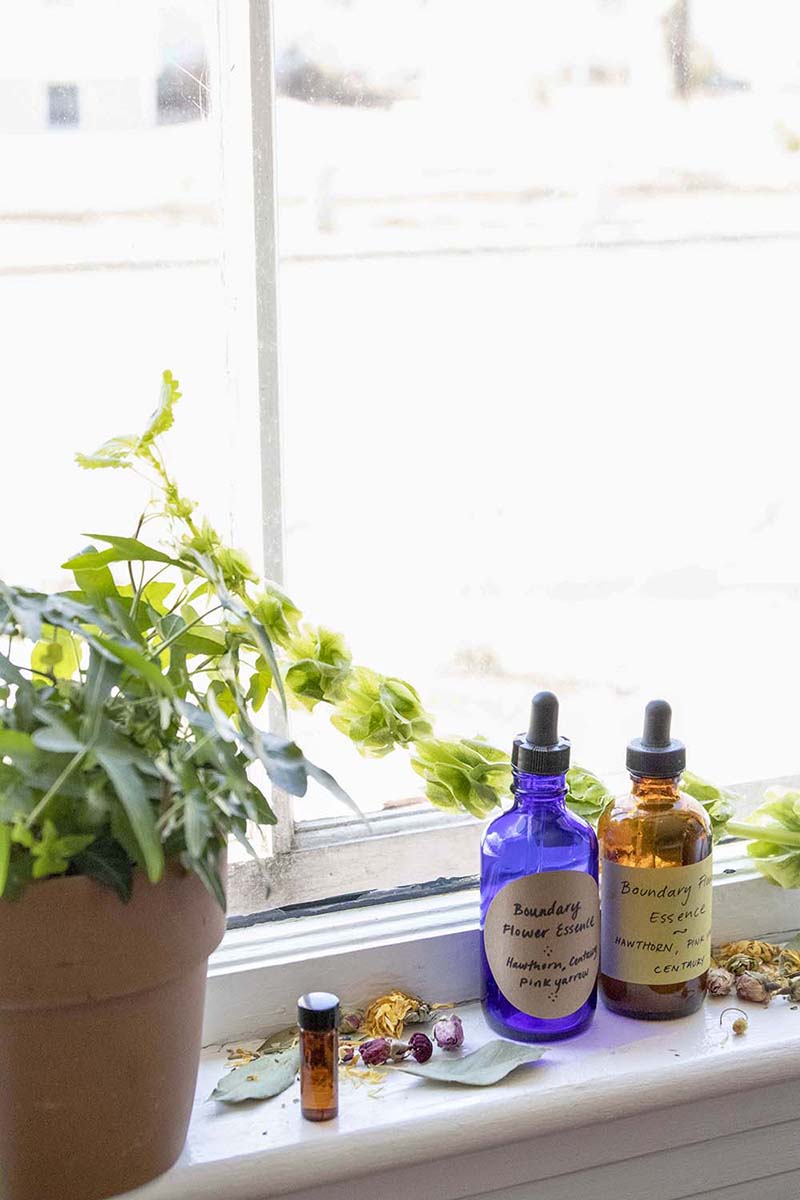
Flower Essence Formula For Healthy Boundaries
1 drop hawthorn (Crataegus monogyna) stock essence
1 drop pink yarrow (Achillea millefolium var. rubra) stock essence
1 drop centaury (Centaurium erythraea) stock essence
~15 ml spring water
- Pour the spring water into a clean 1/2-ounce glass dropper bottle.
- Add the flower essences to the dropper bottle.
- Shake the dropper bottle lightly to combine.
- Enjoy 4 drops of the flower essence formula 4 times per day, or take it intuitively in drop doses as needed throughout the day.
Curious to make your own flower essences from scratch? Check out our post on How To Make A Homemade Flower Essence.
Practicing Urban Herbalism Every Day
Starting with the herbal recipes above, urban herbalism can easily become an everyday practice. Although these recipes will certainly come in handy while dwelling in the city, they can also be applied outside of urban environments too depending on the need at hand.
Looking for more ways to bring your love of herbs inside your cozy city nook? Check out our post all about growing your own culinary herbs indoors all year round!
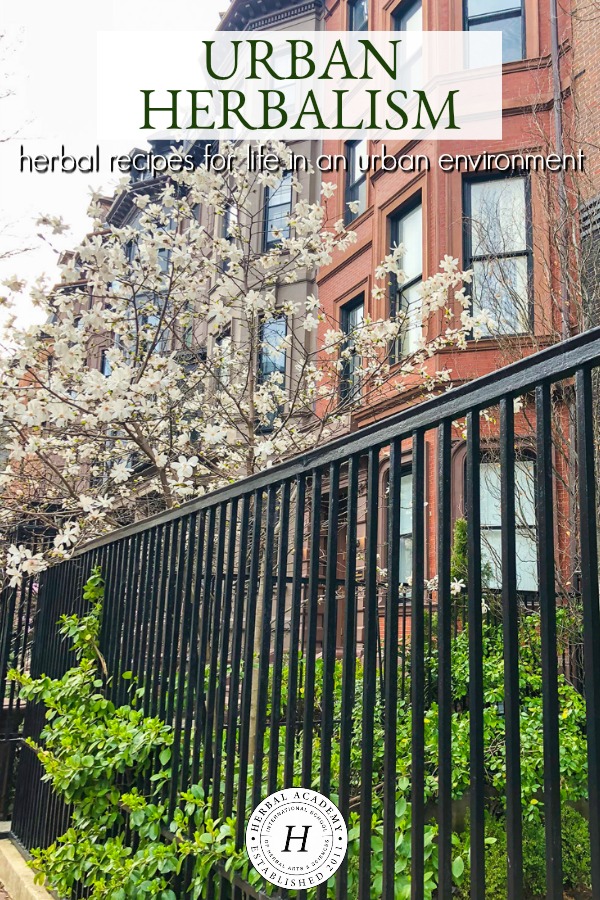
REFERENCES
Bhatia, S.N., Underhill, G.H., Zaret, K.S., & Fox, I.J. (2014). Cell and tissue engineering for liver disease. Science Translational Medicine, 6(245), 245sr2. http://doi.org/10.1126/scitranslmed.3005975
Cohen, M.M. (2014). Tulsi – Ocimum sanctum: A herb for all reasons. Journal of Ayurveda and Integrative Medicine, 5(4), 251-259. http://doi.org/10.4103/0975-9476.146554
FES Flowers. (n.d.). FES flower essence guide. Retrieved from: http://fesflowers.com/wp-content/uploads/2018/12/flower-essence-guide.pdf
Holmes, P. (1989a). The energetics of western herbs (Vol. 1). Coati, CA: Snow Lotus Press.
Holmes, P. (1989b). The energetics of western herbs (Vol. 2). Coati, CA: Snow Lotus Press.








